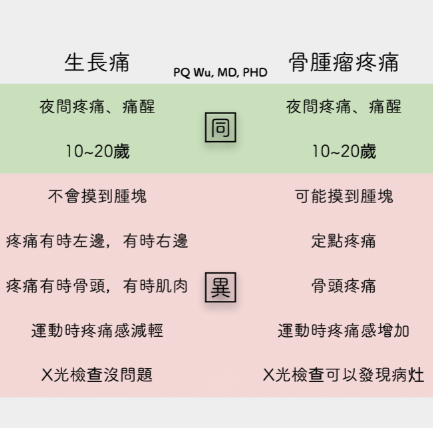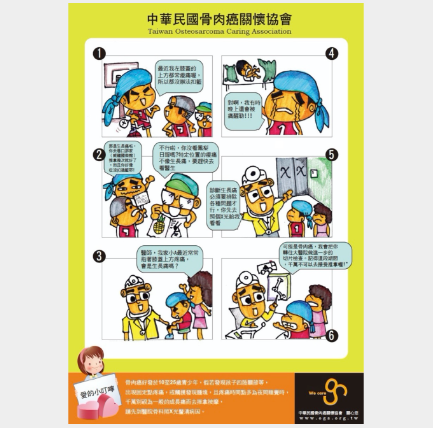Palpable mass and Pain are general symptoms for osteosarcoma patients, especially during exercise and rest at night (night pain).
When inquire patients for their symptoms, physicians should pay more attention to whether the patient complains about the accompanied night pain and weight loss.
According to a 2015 study at Vancouver*, about 21 to 37 percent of patients would have night pains. Why is it that general osteosarcomas generate night pain or even wake patients up with pain? There are two reasons: First, because the amount of cortisol secretion is relatively less at night, so the tolerance to pain is poor in the body. Second, patient tends to be more focused and easy to feel the discomfort inside the bone in the quiet night.
* An Evidence-Based Case Study of Unilateral Shin Splints: Do Red Flags Function in Paediatric Osteosarcoma? Physiother Can. 2015.
Notably, since these symptoms are not specific, delayed diagnoses are often incurred. Growing pain, same as osteosarcoma, also generates night pain and even wakes up the juniors. Meanwhile, growing pain often occurs on 3-5 years old or 8-11 years old children, and 8-11 years old is also the prone occurrence age of osteosarcoma. As a result, quite a few patients are often mistakenly treated as growing pain before diagnosed as osteosarcoma, delaying the treatment.
Basically, we can still primary distinguish growing pain and osteosarcoma pain, as shown in the table below. General growing pain will not generate obvious symptoms such as redness and fever. The pain will not occur at a fixed location. It will be sometimes left, sometimes right, sometimes muscles, and sometimes joints. In addition, the pain may usually disappear during physical education classes. If your child tells you that it is a fixed place for pain, especially near the knee, hip or shoulder joint, it will be better to take your child to the hospital for an orthopaedic examination. If necessary, we can take an X-ray for further examination.

The animation below was produced by Taiwan Osteosarcoma Caring Association . In recent years, we have organiezed several on campus campaigns to tell students and teachers how to distinguish between growing pain and tumor pain. Moreover, our association also distributed the one-pager to students and posted larger posters on campus to remind children, teachers, and parents.
I also make it a short animation according to the drawings. Through these approaches, we hope that the public will understand many clinical regrets can stop happening again!



